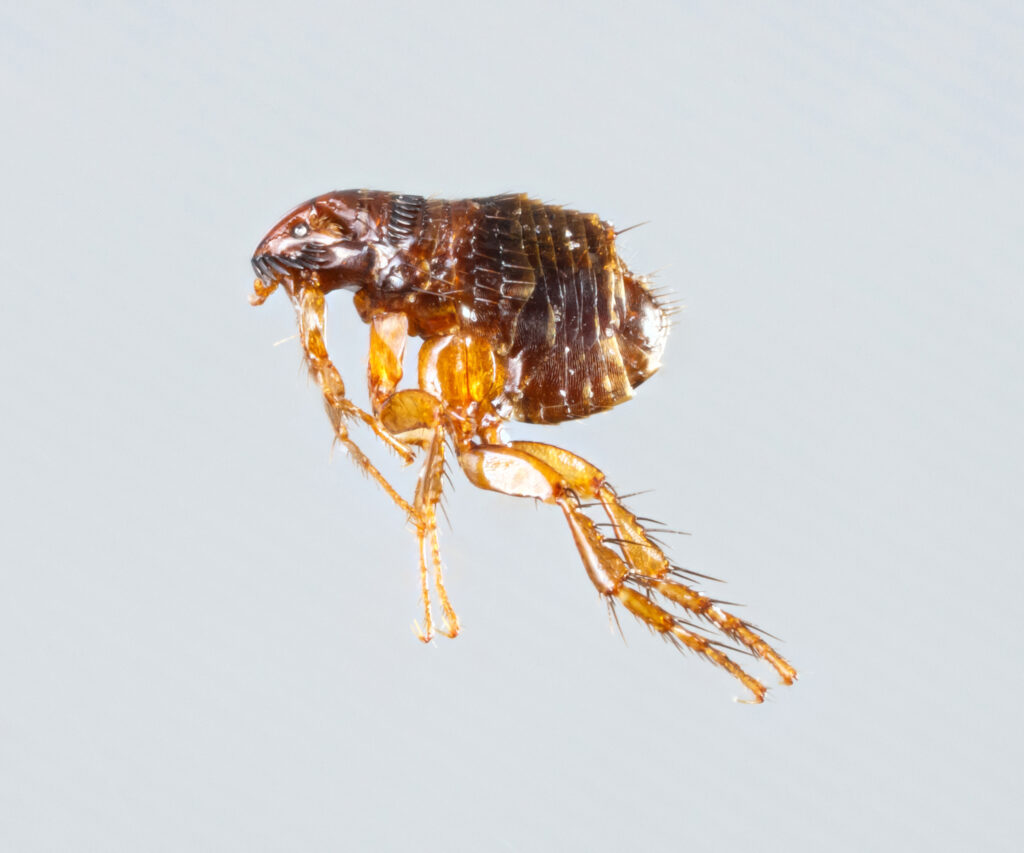Flea Control
- Home
- Fleas
Fleas can be a persistent problem, especially in pets.
Effective control begins with knowledge of the different types of fleas and their life cycle.
Find out here how to recognize, prevent and effectively control fleas to keep your home and pets flea-free.

Flea control
Fight
Controlling fleas requires specific expertise due to their ability to multiply quickly and their preference for pets as hosts.
Our professionals offer professional and effective methods of flea control to keep your home and pets protected.
* The cat flea is laterally flattened, pale yellow to black, wingless and has well-developed jumping legs.
* The infrequent dog flea has almost the same appearance.
The difference is in the length of the erst cheek tooth crest.
In the dog flea, the first cheek tooth comb is about half as long as the second; in the cat flea, the first tooth of the cheek tooth comb is slightly shorter than the second.
* Complete transformation
* Duration of the egg stage several days to several weeks.
* The female lays 3 to 10 eggs after each blood meal, totaling up to several hundred.
* Duration from egg to adult about 4 to 6 weeks at room temperature.
* The pupal stage can be dormant for long periods of time.
* An adult cat flea can live about 12 years.
* The cat flea feeds on blood from dogs or cats, in humans the cat flea cannot survive, but does make a test bite.
* Lives both on the host (dog or cat), and in or near the host's roost.
* The larvae live on dead insects and feces of adult fleas.
* Eggs are usually not laid on the host, but somewhere on the ground.
* Cat fleas can act as the intermediate host for several tapeworms, especially the canine tapeworm.
* Check pets regularly for the presence of fleas; this can be done with a flea comb.
* Vacuum carefully daily, especially just before the vacations.
